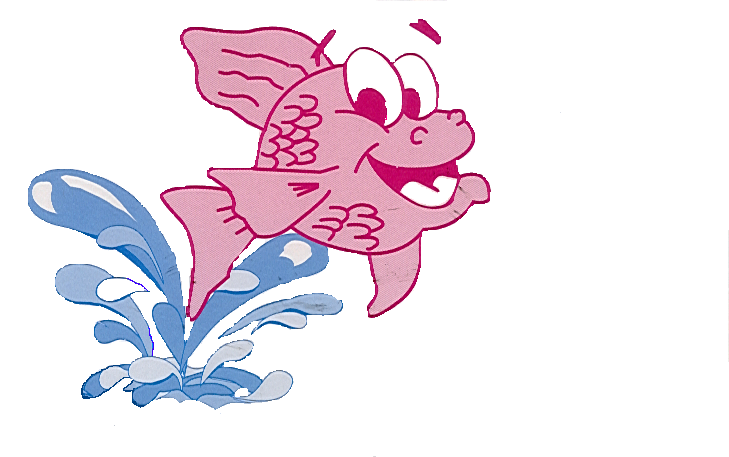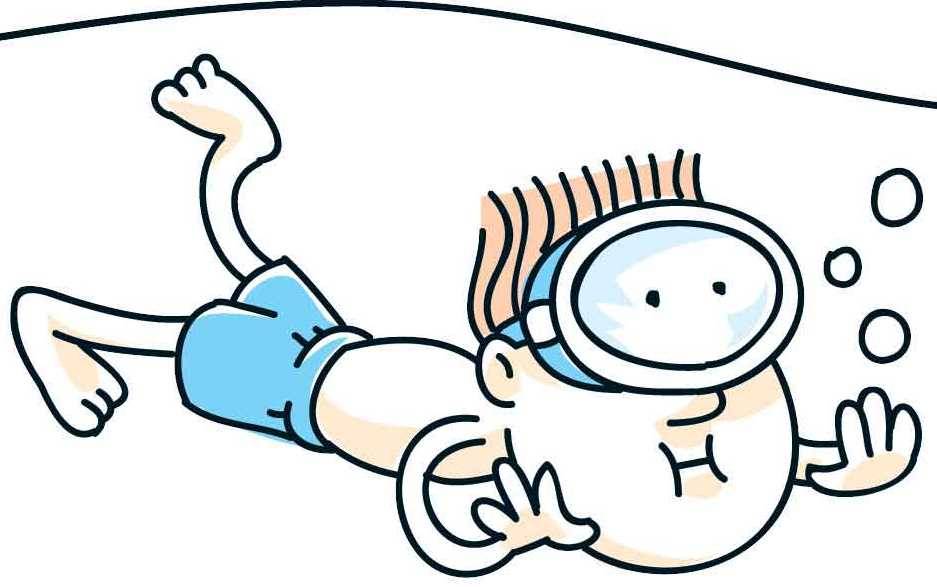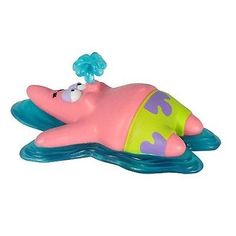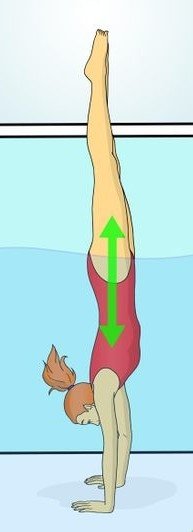How To Help Your Child
Introduction
When a child is learning to swim they need to spend as much time as possible in the water. A 30 minute lesson per week is not a lot of time for a child to build water confidence and learn the necessary swimming techniques and other water skills. Any additional water time is a bonus, whether it be practising the strokes or just playing in the water.
Generally children love to be in water and a visit to the swimming pool should be enjoyable for both parent and child. Many parents say to me that their child only wants to play when they take them swimming and they become annoyed when they won’t practice their strokes. If this is the case, try and make learning fun for your child by playing games in the water. Some of these games can be played in the bath at home

Advice on goggles
If children are to become completely water confident and safe in water it is important that they are happy to put their faces in water without the use of goggles. You should aim to play these games without using goggles. However, if wearing goggles encourages them to put their face in the water they can be used, but a child must not become dependent on the use of goggles.
We do not recommend the use of goggles in the early stages of learning to swim. If your child wishes to wear goggles in the Improver and Advanced classes please ensure that the goggles are of good quality and fit correctly. Children do become very distracted if goggles need to be adjusted or fill with water.

Building water confidence
Children should learn to control the water when it covers the face without swallowing it. This can be achieved by teaching them to breathe rhythmically in the water. Encourage the head then breathe in for two. Repeat this until the child can do this ten times in a controlled, rhythmic manner, without swallowing water.
Blowing bubbles in the water, progressing to putting mouth and nose in the water and exhaling, then eyes and forehead until eventually you can encourage them to submerge their head completely.
Touching the bottom of the pool with knees, hands, elbows, bottom etc.
How long can they put their face in the water gently exhaling count for your child so they always have a target next time to beat.
Counting fingers under water, thus encouraging them to keep their eyes open. When they surface, tell them to "blink" the water away rather than rubbing their eyes.
Push and Glides
This is a practice that helps achieve a streamlined body position which is required for
all strokes.
Push and glides from the pool wall on the front with or without the face in the water. If the face is out of the water the chin should be low, resting on the water. Arms should be outstretched in front of the head with thumbs touching, legs should be long at the back with knees and ankles touching and toes pointed backwards.
Push off the wall and float as far as possible always trying to keep the body as long and thin as possible. See how far they can glide before they put their feet down. Stand on the spot where they stop then try and get a little farther next time.
Push and glides on the back are achieved by starting with the hands holding the bar, feet high up on the wall ensuring ears are in the water and eyes looking at the ceiling. Encourage a gentle uncurling movement keeping the tummy near the surface and arms by their sides. The glide should be smooth and streamline without any splash.

Star floats on the back
Eyes looking up to the ceiling, ears in the water, tummy, knees and toes near the surface, but do not let the feet come out of the water as this will cause the child to ‘sit’ in the water rather than lie flat. Arms and legs should be wide ‘like a star’. Encourage them to relax and pretend to go to sleep, as any tension will cause them to sink. Count how long they can hold this position.

Mushroom Floats
Standing in the pool with shoulders submerged, take a big breath, put the face in the water, tuck knees to the chest and clasp the arms around the lower legs. Curl into a tight ball keeping the chin tucked into the chest. Bob like a cork in the water and count how long this position can be held. This is an early practice for surface diving.
Handstands
Try and put both hands on the pool floor and stand upside down with legs sticking out of the water. As this skill improves try and get your child to keep their legs together, toes pointed and achieve a tidy controlled handstand. This is a practice for surface diving.

Swimming through legs
This will help your child with their surface diving and underwater skills. Aim to swim with tummies near the floor and as they improve, move further away so their underwater swim is longer.
Always try and set an achievable target for your child, when they succeed it will spur them on to reach that next goal. I hope this helps you, to help your child improve their water confidence and water skills and makes learning to swim much more fun for the whole family.
Jackie Moore
